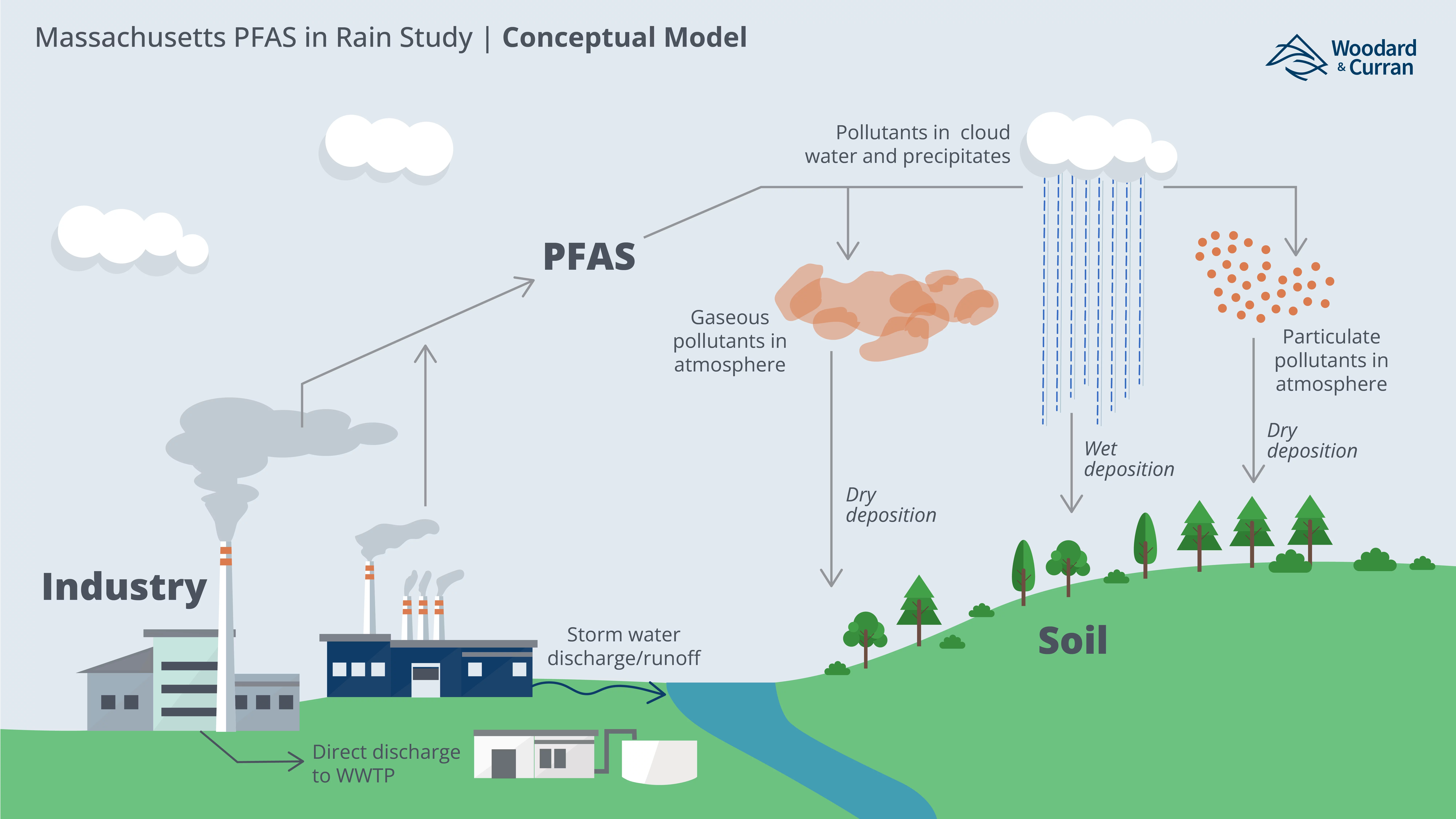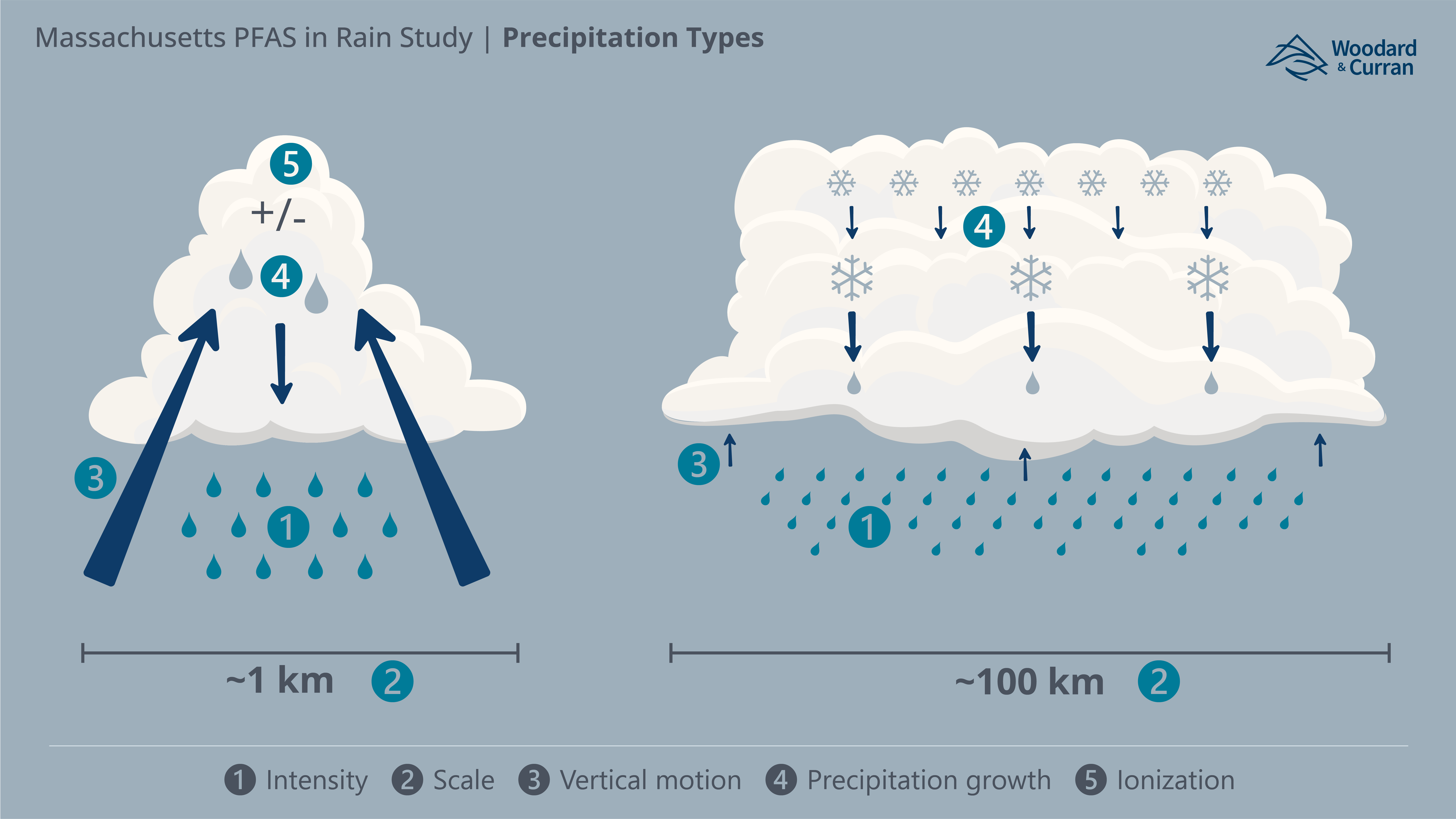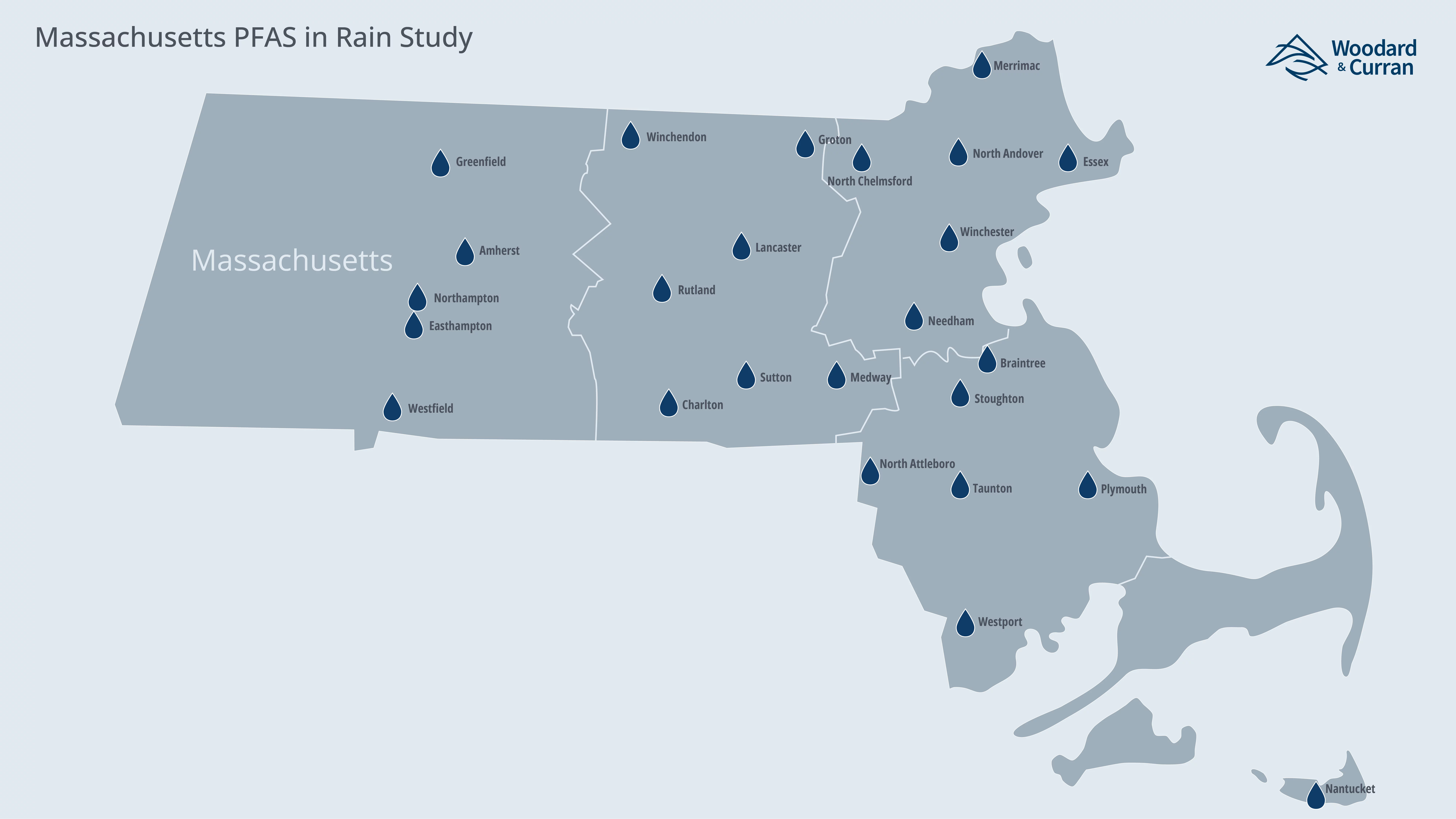Results
Between September 13 and October 30, 2021, study volunteers collected 50 samples, with each station submitting two samples for testing. Of these, 27 samples were collected during stratiform rain events and 23 were collected during convective rain events. Laboratory testing indicated the presence of five different PFAS compounds in 11 of the samples. Only one of the positive samples was collected during a lower intensity stratiform event. The rest were collected during high-intensity convective events (thunderstorms).
Detection of PFAS in more than 20 percent of samples demonstrates how widespread these compounds have become in the environment. However, total PFAS concentrations detected in the positive samples were very low, not exceeding 8.78 ng/L. Although not directly applicable, none of these detections in rain water exceeded the current Massachusetts PFAS6 drinking water standard of 20 ng/L.

Stratiform vs. convective precipitation
The trend of PFAS detected largely in samples collected during convective events is not a coincidence. Physical dynamics at play within these higher-intensity rain storms may enable clouds to draw in and deposit PFAS molecules more efficiently than during stratiform events.

Five distinguishing characteristics between the two precipitation types could affect the wet deposition efficiency of PFAS:
- Intensity: raindrop size and rainfall rate. Greater intensity of rain correlates with more effective deposition.
- Scale: relative size, and when it comes to weather, big energy comes in a small package. Convective events tend to be smaller, but also more concentrated than stratiform events, their lighter and more distributed counterparts.
- Vertical motion: the updrafts that pull in ambient air as a cloud evolves. Convective systems have strong localized updrafts that draw in ambient air, moisture, and other particles — including PFAS. Stratiform events have updrafts too, but they tend to be significantly weaker.
- Precipitation growth: the manner in which raindrops form within a cloud. In convective clouds, rain forms from the bottom up — as air rises and cools, vapor and aggregate moisture condense, forming large, heavy drops. When these drops accumulate enough mass, gravity takes over and they fall to the ground. In stratiform events, rain is created from the top down, starting with ice crystals that grow as they descend, and melt after settling into a warmer part of the cloud. The source material for raindrops in a stratiform event is thus farther removed from lower-level ambient air, where elevated localized PFAS concentration may exist.
- Ionization: in the case of more mature cumulonimbus clouds, associated with strong convective events, static electricity can build up, creating an ionized environment that is more attractive to PFAS molecules. Ionization may play a substantial role in convective events’ ability to uptake and distribute PFAS in rain.
What’s Next?
The data gathered during the study on PFAS in rainwater advances our experts’ understanding of the PFAS problem and opens up opportunities to expand this research. The study team is interested in comparisons with other states in the region, continuing to assess nature and extent of PFAS in our environment, and understanding how seasonal changes might impact results. Committed to understanding and furthering environmental science and technologies, our people continue to pursue primary research leveraging leading-edge knowledge and resources to benefit our clients and the industry as a whole.



